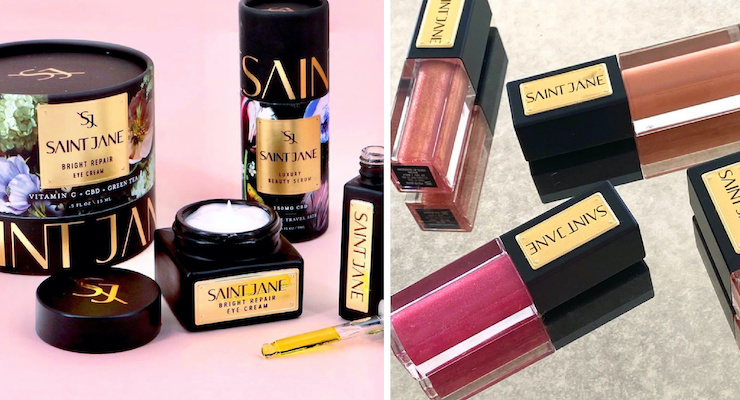By Jennifer Whetzel, Founder, Ladyjane Branding11.02.20
What do beauty products promise? No matter what their packaging says, it isn’t smoother skin or wrinkle reduction.
The truth is that beauty products have always promised us the best version of ourselves. Even if the promise has been constant, formulations have changed with the times, and CBD is one of the newest additions to the lotions, salves, and makeup that we find in our medicine cabinets.
CBD beauty products represent an exciting opportunity—one whose pitfalls can be avoided if you think carefully about what you’re actually selling.
CBD Is Now NBD
Many consumers have been noticing a serious uptick in CBD products, and there’s a straightforward reason for that. The 2018 Farm Bill legalized hemp production nationwide, which meant that farmers could start extracting CBD without breaking the law. But that also created a new wave of CBD-related products, along with new challenges for marketers attempting to stand out.
The sheer number of products in this new market can make it hard for brands to feel distinct from one another; another hurdle is the language that you can and can’t use to promote your products.
If your product claims to treat or prevent disease, or affect the structure or function of the body—including the skin—it’s a drug, according to the law. That means that even if what you’re selling only affects the skin’s appearance, it must meet the requirements for drugs. And even if you wanted to, being able to prove the product claims to treat or prevent disease is a long way away. The fact that cannabis is illegal on the federal level makes it nearly impossible to do clinical studies (though, hopefully, this will change with the expansion of legalization).
That sounds pretty open-ended, so what’s off-limits? Drug claims could include “acne treatment, cellulite reduction, stretch mark reduction, wrinkle removal, dandruff treatment, hair restoration, and eyelash growth.” In other words, a lot of commonly touted benefits fall under that off-limit category.
The best way to market your brand is by avoiding that language from the start; relabeling and repackaging are expensive, and that cost can be compounded with any legal fees if you’ve gotten in trouble with the law for your marketing language.
In other words, take the opposite tack of Nike and just don’t do it.
Packaging’s Promise
Once they realize they can’t make health claims for their CBD products, marketers wonder how they can sell their product without highlighting the most obvious benefits. At that point, it’s important to remember that beauty products are offering consumers the best version of themselves, and there are a number of ways to go about making the case to consumers in a legally sound and compelling way.
For instance, think about why you included CBD in your product—let’s say it’s a lotion. CBD is often included for anti-inflammatory qualities or a certain kind of sensation. That being said, since there haven’t been widely-accepted clinical trials around CBD, you can’t make the claim that CBD will have a particular effect.
You can address this by remembering not to overpromise and to deliver on the emotional part of CBD’s effects. It’s no accident you see many CBD product descriptions like “may promote relaxation,” or that focus on the idea that CBD “can help with soothing” dry skin throughout the day. By not promising a very specific effect that could be seen as a drug claim, marketers can keep their products out of legal trouble while still alluding to CBD’s benefits.
Notice the language here: “relaxation” and “soothing.” These are emotional words that resonate with stressed-out consumers who want to pamper themselves (and not coincidentally, those are often people who will seek out CBD beauty products).
It’s not just the words that resonate; the packaging itself matters too. All brands have a different look and feel that’s reflected in their packaging; that look can help sell the product and build customer loyalty.
Perhaps you’re selling shampoo in a bottle made with reclaimed ocean plastic to convey a beachy vibe to a laid-back and fun-loving consumer. Or maybe your product is a salve in a brown apothecary-style jar to appeal to customers who value a more homespun feel.
Both of these ideas are viable in the context of the customers they’re attempting to appeal to, and they should encourage any marketers who worry about being too hemmed-in by what they can’t say. Nobody remembers that a product “reduces the appearance of wrinkles by 20%”; they remember that a product promises them youth. People continue to judge books by their covers and products by their packaging—make sure that when they do, they love what they see.
Whetzel cited Saint Jane as a brand whose packaging she admires. Casey Georgeson, CEO and founder, said: “My aesthetic for Saint Jane has been by far the clearest brand vision I’ve ever had. That’s because the brand is very reflective of who I am and what I love. I wanted our Luxury Beauty Serum packaging (and all of our packaging for our subsequent products) to embody what I hoped the serum would make women feel ... strong, confident, and feminine. I intended to create something special that elevates your daily routine, akin to a beautiful fragrance bottle on your vanity.”
Photos via Instagram/SaintJaneBeauty
About the author: Jennifer Whetzel is the founder of Ladyjane Branding. She has an extensive background in FDA-compliant messaging and claims for CBD products. She can be reached at [email protected].




























